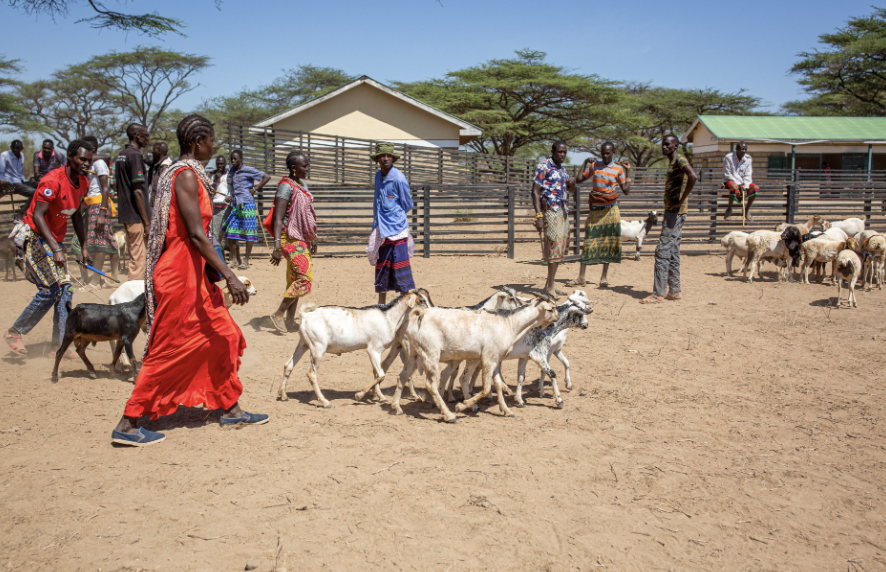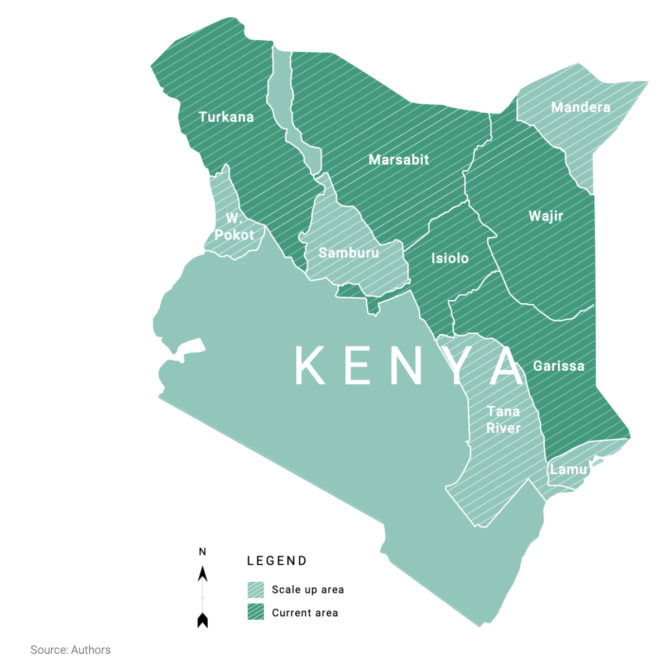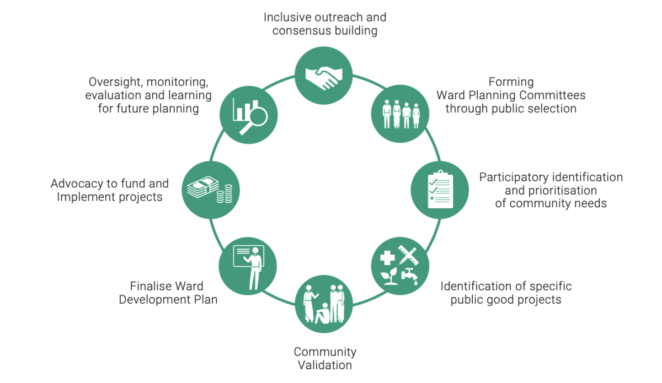Policy brief: Participatory planning in Kenya’s drylands: The Ward Development Planning model

Introduction
There is great potential to take a bottom-up approach to development planning in the drylands that incorporates the knowledge, input and support of dryland communities. To date, pastoralists have had limited participation in government planning processes, which has resulted in misguided development interventions in the drylands that undermine livelihoods and increase vulnerability.
In this policy brief, and accompanying summary, we describe the Ward Development Planning (WDP) model, a participatory planning approach currently implemented in five counties in Kenya’s drylands. We summarise key learning on the model and provide recommendations for scaling up participatory planning for contextually appropriate and locally legitimate resilience-oriented development.
This article is an abridged version of the original text, which can be downloaded from the right-hand column. Please access the original text for more detail, research purposes, full references, or to quote text.
Method
The brief draws on original, field research carried out by Mercy Corps in Garissa, Isiolo and Turkana Counties in October and November 2021 in wards where the model is being implemented. This was supplemented with key informant interviews and a review of secondary sources including process documents and reports capturing broader programme impact.
Field data includes 58 in-depth interviews and seven focus group discussions with programme participants (n=54), county and national government stakeholders (n=12), and implementing staff (n=9).
All interviewees gave informed consent, detailing that participation was fully voluntary, confidential and would not impact programme benefits. Interviews and their analysis were done by an independent researcher.

Key Findings
- There is great potential to take a bottom-up approach to development planning in the drylands that is inclusive of the knowledge, input and support of dryland communities. To date, limited participation of pastoralists in government planning processes has resulted in misguided development interventions in the drylands that undermine livelihoods and increase vulnerability.
- WDP is a local development planning process that deepens Kenya’s devolution to the ward level and addresses the chronic political and economic marginalisation that is evident in dryland regions. The ward-level planning institution fills a gap between community- and county-level planning institutions and devolves decision-making to the ward level.
- WDP empowers pastoralist communities to directly engage in development planning through participatory and deliberate processes. There is effective representation and accountable decision-making through inclusive public selection processes of Ward Planning Committees (WPCs), whose role it is to identify communities’ development needs and priorities and to oversee the implementation of a Ward Development Plan. The high social-embeddedness and deliberate selection of WPC members make these individuals well placed to represent the community in mediating conflict, as well as to share knowledge and information that helps address community needs and builds resilience.
- WDP prioritises development action at the local level according to needs identified by the community.This ensures that investments are contextually relevant and locally appropriate, and avoids wasteful, redundant or maladaptive projects. The model provides a comprehensive multi-sectoral and cross-scale approach that has the promise to strengthen planning across sectors (e.g., water and rangelands) and boundaries to build pastoralists’ resilience to climate and other recurrent shocks and stresses.
- Scaling up the approach holds much potential but requires contextualisation and adaptation during implementation to match the approach to the local governance institutional context and avoid proliferating redundant institutions. It will be important to maintain a focus on the quality of the process, including participation, representative selection and inclusivity. Learning from the WDP model can also be integrated with alternate ward-level planning institutions in the future.

To explore the key messages in more detail please refer to the original policy brief.
Recommendations
Following the first roll-out in five counties, the WDP model is now being scaled up to all 10 counties in the FCDC regional bloc. In scaling the model to other wards and counties in Kenya, or applying it to new areas, we recommend careful consideration of the following guiding principles:
- The design of participatory planning institutions should not be ‘one size fits all’ but instead responsive to contextual factors.
- Focus should be maintained on the quality of participation, the process of representative selection and inclusivity.
- Local implementers must have the resources, capacity and authority to exercise discretion and make adaptations during ground-level implementation.
- Participatory planning interventions must not compete with existing formal or informal governance structures.
- Effort should be made to avoid proliferating redundant participatory processes in the same communities through coordination among government and NGOs.
- As the WDP approach is integrated into government planning and processes, a predictable and regular funding stream will be important.
Explore the recommendations in more detail on p.11 of the policy brief.
Further Resources
Suggested Citation:
Bedelian, C., Hakiman, K., Sheely, R. and Stull-Lane, C. (2023). Participatory planning in Kenya’s drylands: The Ward Development Planning model. SPARC.
Suggested Citation:
Bedelian, C., Hakiman, K., Sheely, R. and Stull-Lane, C. (2023). Participatory planning in Kenya’s drylands: The Ward Development Planning model. SPARC.
Related resources
- Safeguarding livelihoods and promoting resilience through National Adaptation Plans– Case study: Kenya
- Kenya’s Monitoring and Evaluation of Adaptation: Simplified, integrated, multilevel
- Drought cycle management in arid and semi-arid Kenya
- Principles for Co-Producing Climate Services: Practical Insights from FRACTAL
- Resilient Generation: supporting young people’s prospects for decent work in the drylands of east and west Africa
(0) Comments
There is no content